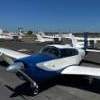TOGA attitude for IF
-
Members Online
- eman1200
- Danb
- DonMuncy
- Ragsf15e
- Neshi
- Shortround
- drstephensugiono
- Planegary
- exM20K
- Gary Bymers
- bixmooney
- Rmnpilot
- DXB
- Yetti
- TangoTango
- Black
- phxcobraz
- Nico1
- bigmo
- toto
- 47U
- spistora
- jeansilva247
- Fix
- EricJ
- kortopates
- Justin Schmidt
- jetdriven
- PT20J
- A64Pilot
- Steve Dawson
- Bob Weber
- jordanjms
- ElkoRandy20J
- EKoS
- Ovation II DX


Recommended Posts
Join the conversation
You can post now and register later. If you have an account, sign in now to post with your account.